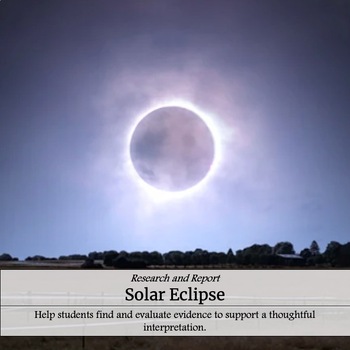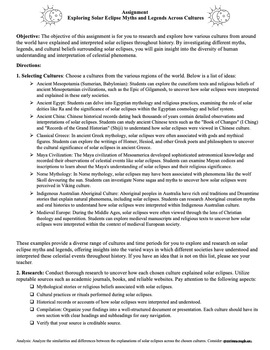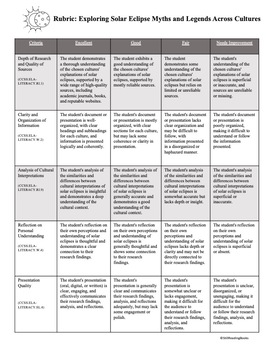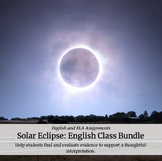Solar Eclipse 2024: Researching the Past Assignment
- PDF
Also included in
- Included in this bundle are two activities to further develop your students' research, writing, and presenting skills. Plus a BONUS assignment of Journal Prompts with rubrics!Price $4.50Original Price $6.00Save $1.50
Description
Looking for a way to engage your students regarding the Solar Eclipse?
Our assignment on solar eclipse myths across cultures offers a thrilling journey through time and space, guaranteed to spark your students' imagination and critical thinking skills!
Skills Developed
Research: Students will conduct thorough research using a variety of sources to explore solar eclipse myths and legends across cultures.
Analysis: Students will compare and contrast cultural interpretations of solar eclipses, identifying similarities and differences.
Critical Thinking: Students will reflect on their own perceptions and understanding of solar eclipses in light of their research findings.
Communication: Students will present their research, analysis, and reflections in a clear and engaging manner.
Included in the Assignment
- Selection of Cultures: Students will choose a culture from various regions of the world to research or they can bring their own ideas with teacher approval.
- Research: Students will investigate mythological stories, religious beliefs, cultural practices, and historical records related to solar eclipses in their chosen cultures.
- Compilation: Students will organize their research findings into a well-structured document or presentation.
- Analysis: Students will analyze the similarities and differences between cultural interpretations of solar eclipses, considering broader cultural contexts and worldviews.
- Reflection: Students will reflect on their own perceptions and understanding of solar eclipses, drawing connections to their research findings.
- Presentation: Students will present their research, analysis, and reflections in an oral, digital, or written format, depending on the preferences of the instructor.
Possible Cultures to Explore
Ancient Mesopotamia (Sumerian, Babylonian)
Ancient Egypt
Ancient China
Classical Greece
Maya Civilization
Norse Mythology
Indigenous Australian Aboriginal Culture
Medieval Europe
This assignment offers students a comprehensive exploration of solar eclipse myths and legends, fostering critical thinking, cross-cultural understanding, and communication skills.
Looking for other ways to include the Solar Eclipse in your curriculum? Try these:





